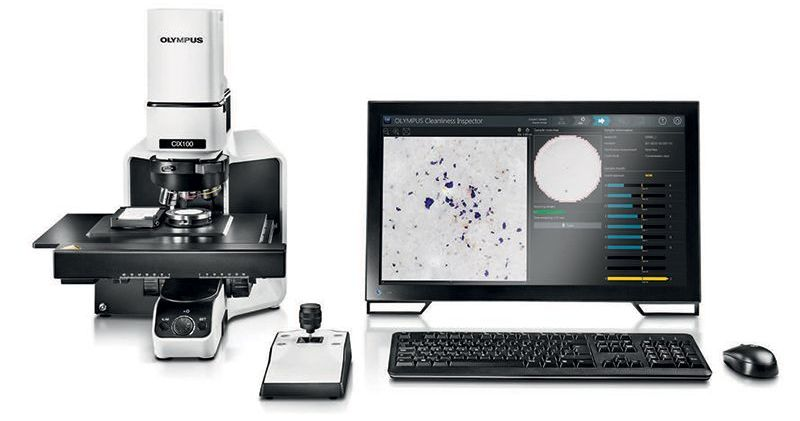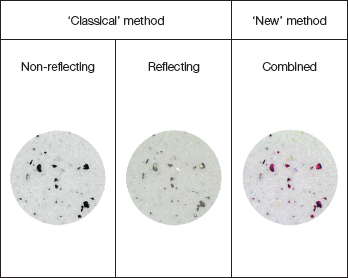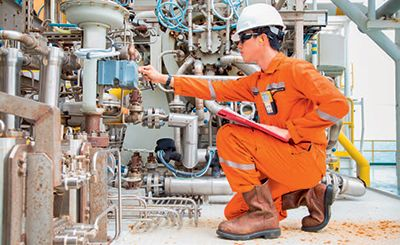Analyzing particle contamination in liquids is an important element of industrial inspections in both maintenance and manufacturing.
Detecting particles like varnish, metal, and sludge can help prevent wear, corrosion, contamination, and equipment downtime from impacting industrial processes.

Common Methods to Analyze Particulate Contamination in Liquids
There are multiple methods that can be used to analyze particulate contamination in liquid samples. One example is laser-based particle counters, which are often used to count particles in a sample.
Yet, this kind of measurement does not offer any details about particle size or identify if particles are reflecting or non-reflecting. The latter is particularly important in identifying whether the particles are soft, like fabric, or hard, like metal. In addition, laser-based particle counters tend to miss any transparent particles in a sample.
Automated microscopic particle analysis, on the other hand, can acquire a detailed overview of contamination in a liquid sample.

Figure 1. The Evident CIX100 provides an easy, intuitive particle inspection workflow.
Automated particle analysis systems like the Evident CIX100 cleanliness inspector (Figure 1) capture all the relevant information about sample contamination to enable confident decision-making in both maintenance and manufacturing.
The system has a simple inspection workflow. First, a liquid sample with particle contamination is filtered through a membrane.
Next, the inspector places the filter membrane under the microscope and begins the automated imaging and particle analysis. The microscope identifies particles as small as 5 μm—ten times smaller than stereo microscope systems.
With the microscope’s unique polarized light illumination, a single scan can identify both reflecting and non-reflecting particles.

Figure 2. Evident’ unique illumination approach polarises part of the light’s spectrum to detect reflecting particles, avoiding the need for a separate scan and speeding up inspections.
This results in significantly faster imaging and analysis compared to conventional illumination (Figure 2). Intuitive software then automatically summarizes the results, providing users with customized reports quickly and easily.
There are two applications where microscope-based analysis offers significant benefits compared to alternative methods: quality control (QC) in pipe manufacturing and the analysis of oils used in industrial plants for lubrication and hydraulic systems.
Read on to explore each application in detail.
Maintenance Application: Oil Inspection
Gearboxes, hydraulic systems, and transformers all depend on oil for successful performance.
However, both friction and oxidation can result in the formation of particulates, leading to decreased efficiency, part failure, and corrosion. Regular inspection of oil samples for particulates helps prevent damage, since inspectors know when to replace the oil (Figure 3).

Figure 3. Regular inspection of oil samples helps to prevent damage by knowing when to replace the oil.
Using the Evident CIX100 system to image a filter membrane after sample filtration helps ensure the most detailed sample data. The system shows the presence of potentially transparent contaminants like varnish and sludge, which form due to oil oxidation.
The detection reliability helps ensure that inspections fully comply with relevant oil and gas industry standards, such as ISO 4406, ISO 4407, DIN 51455, and SAE AS4059. Further, automated thresholding settings for oil samples means inspections are fast and require minimal training.
Manufacturing Application: Pipeline Quality Control
During the production of pipes for oil extraction, unwanted particles can remain in the pipes after fabrication and affect the pipe durability. To determine if there are particles inside the pipe, hydraulic fluids can be flushed through the pipes and analyzed.
The Evident CIX100 system is well suited to particle detection in pipes. The system provides a detailed overview that includes the number of particles, as well as the size distribution and types of particles. With four terabytes of HDD storage capacity, the system can store thousands of measurements—including the image of the whole filter membrane and each individual particle—in full detail for easy digital archiving.
Summary
Industrial microscopes have advanced significantly since the days of manually counting particles to measure contamination.
The latest automated microscopy systems can detect and analyze particles with more accuracy compared to laser-based particle counters. For instance, the Evident CIX100 technical cleanliness system can be used in both maintenance and manufacturing to detect a wide range of particles.
Its intuitive, simple workflow optimizes data acquisition, review, and report generation processes, enabling inspectors to perform fast, accurate inspections.

This information has been sourced, reviewed and adapted from materials provided by Evident Corporation - Industrial Microscopy.
For more information on this source, please visit Evident Corporation - Industrial Microscopy